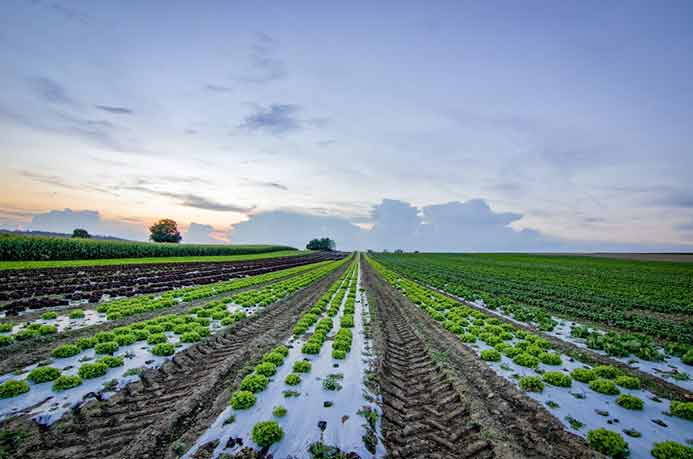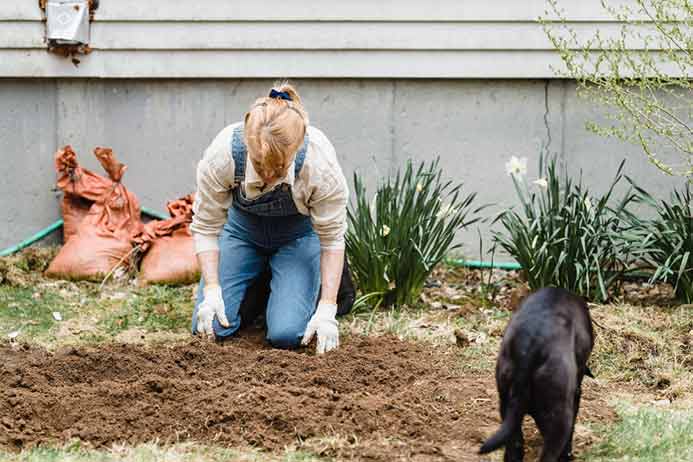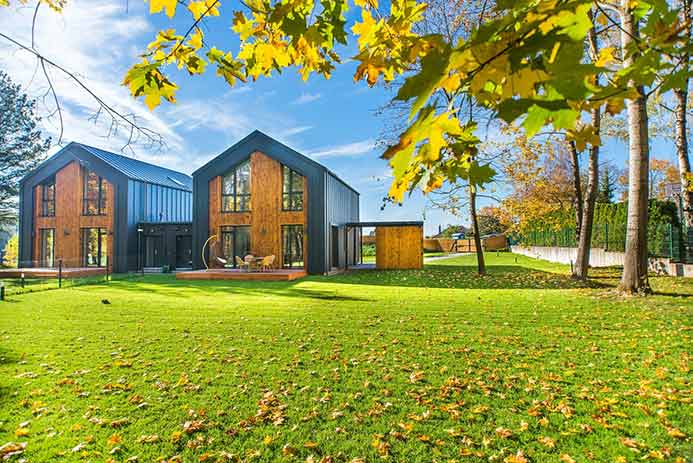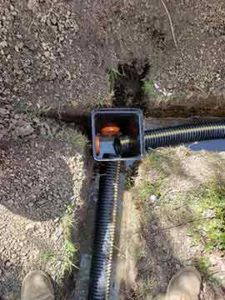Low ground and poorly draining soil make it simple to have standing water in your yard. Unfortunately, this could endanger your property in addition to being a bother. Stagnant water can harm your home’s value and necessitate expensive future repairs by causing damage to your lawn, trees, basement, and foundation. French drains come in various shapes and names, including trench drains, rock drains, and drain tiles, to mention a few. The fundamental elements of this drainage system stay the same regardless of configuration. It functions like a gutter system for your yard, diverting water from your house. There are many benefits to this system. In this article, we at Chicago Plumbing Experts want to share whether you should have a French drain installed on your property.
Having a French drain installed prevents water damage
French drains can be an excellent way to stop water from damaging your house or other property. This is so that excess water diverts away from the walls, basement, and foundation. Unfortunately, water buildup near a building’s foundation over time may erode the structure’s structural integrity. This caused expensive damage. If the water around the foundation is not properly drained, it may seep into the walls and lead to mold and mildew, contaminating the air. You can redirect water using French drains to different parts of your home. Doing this lowers the water pressure, preventing seepage into the foundation. French drains can reduce soil saturation and damage, eliminate floods, and avoid standing water around your home or business.
The French drain installed on the property could save you considerable money in repairs. It also protects your property from water damage. Water damage can significantly damage your property value, making it difficult to sell when potential buyers spot it. And there is a good reason for this. Experts at evlmoving.com advise us to inspect the property for water damage before we move in. Not only will it require repairs, but it can also indicate a broader problem with a home’s plumbing system.
Reducing Soil Erosion is another benefit of having a French drain
By diverting extra water from the soil, which can cause erosion, French drains can help decrease soil erosion. Water that collects in one place and percolates through the soil can generate soil erosion, which can damage flora, expose roots, and result in other erosion problems. French drains provide the water a different route, stopping it from pouring over the top of the soil and allowing it to move through the soil more slowly, decreasing soil erosion. By diverting water from the ground, we can lessen soil saturation and preserve the soil’s organic composition. This is especially helpful during colder months when many plumbing problems arise.
French drain installed on the property reduces soil runoff by rerouting water away from your yard. Soil runoff carries topsoil, boulders, and other debris and can cause erosion in other areas of your yard. They work well in locations with significant erosion or where water collects and floods. This can happen in your yard’s low-lying sections. The bottom of slopes where water naturally flows can also be affected. Without adequate drainage, the water can build up in these places, causing soil saturation, plant damage, and mosquito and other insect breeding grounds. Therefore, French drains can aid by redirecting the water to different sections of your yard or a stormwater system, preventing water pooling and flooding in these locations.

French drain installed on a property can save your soil from the great damage that heavy rain can cause.
It reduces flooding effectively
French drains are an excellent tool for reducing flooding. This is especially true in regions that frequently get heavy rain or have poor soil drainage. In specific locations, standing water on the ground can cause floods, wash away yards, and damage building foundations. Thanks to the French drain installed on property, your yard’s excess water will have a path. Doing this directs the water to an appropriate region, such as a drainage ditch, stormwater system, or a place with good drainage. Rerouting water may shield your property from costly water damage and prevent floods and water pools.
You can build French drains in various locations, and their efficiency can be increased by incorporating a sump pump or vacuum system. The system’s water drainage capabilities can benefit your garage, cellar, or other low-lying areas. These regions could be prone to floods, preventing water from entering or building up at the property’s foundation. Installing a French drain might be a practical way to lessen the consequences of a flood or prevent one from happening if you live in a flood-prone location.
Improving Soil Drainage is another benefit of this system
When natural drainage is inadequate because of heavy soil or a high water table, French drains can help to enhance soil drainage. When the earth is full of water, it can quickly run out of oxygen, causing plant suffocation and other issues with the soil. By letting surplus water drain from the ground, lowering the water saturation level, and raising the oxygen levels in the soil, French drains can aid in bettering soil drainage. A perforated pipe surrounded by gravel or other aggregate materials makes up the French drain system. The tube can be strategically positioned at the proper depth to quickly divert water from the earth. By improving soil drainage, French drains can maintain healthy plant growth. It also prevents root rot and other soil-related issues.

If not drained, soil can cause the roots to rot, preventing plants from absorbing water.
French drain system saves your money
A French drain can save you money in the long term by averting water damage and expensive repairs. Over time, water damage to your property can result in costly repairs and a decline in value. You may lessen the possibility of water damage to your foundation, walls, and basement by installing a French drain around your home. Reducing soil erosion, avoiding floods, and safeguarding your landscaping are all benefits of preventing water from collecting around your property. Installing a French drain can help avoid home and property damage and the associated costs. Many other plumbing problems can be avoided if maintained properly, saving you a lot of money. So, always check your plumbing system.

You can install a French drain by yourself, and the process is easy and quick, so you won’t have to spend money on a plumber.
When it comes to keeping your property well maintained, plumbing needs to be perfect. If not, there can be a lot of damage. So in this article, we wanted to share all the benefits of having a French drain installed on your property.

